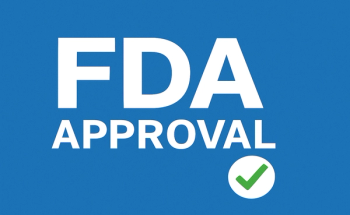
Study Summary: STRIVE
Background
Episodic migraine is part of the spectrum of migraine disorders and is the most prevalent subtype, affecting more than 90% of persons with migraine. It is characterized by headaches occurring on fewer than 15 days per month, with or without aura.1
Migraine-specific medications are available to stop a migraine attack and include triptans such as the serotonin 5-HT1B and 5-HT1D receptor agonists. Non—migraine-specific therapies are also available to help reduce the frequency and severity of migraine attacks, and these include drugs such as topiramate, propranolol, and amitriptyline. Patients taking these drugs may develop intolerable side effects which negatively affect their adherence to therapy.1
Erenumab has recently emerged as a new candidate for preventive treatment of episodic migraine. Erenumab is a fully human monoclonal antibody that targets and inhibits calcitonin gene—related peptide (CGRP), which has been shown to play a key role in the pathophysiology of migraine. In phase 2 trials, erenumab has shown promise in the treatment of both episodic migraine and chronic migraine.1
In the phase 3, randomized, double-blind, placebo-controlled, parallel-group, STRIVE study, Goadsby and colleagues sought to investigate whether erenumab would be an effective and safe preventive treatment for patients with episodic migraine.1
Study Design
STRIVE was conducted at 121 centers in North America, Europe, and Turkey from July 2015 until September 5, 2016. Patients enrolled in the study were adults aged 18 to 65 years who had between 4 and 14 migraine days per month and fewer than 15 headache days per month, on average.1
The investigators excluded patients from the study who had experienced treatment failure with more than 2 classes of migraine-preventive medications. However, patients were eligible if they discontinued migraine-preventive treatment because of insufficient efficacy, a lack of sustained response, or intolerable side effects.1
The initial screening phase of the study lasted approximately 3 weeks. After screening, eligible patients entered a 4-week baseline phase during which they used hand-held devices to keep electronic migraine diaries. They continued to maintain these diaries during the double-blind treatment phase of the study, recording details about their migraine and nonmigraine headaches, including the date and time of headache onset and resolution, its features and severity, associated symptoms, and if they used any medications.1
For the double-blind treatment phase, the investigators randomly assigned patients in a 1:1:1 ratio to receive a subcutaneous injection of either erenumab, at a dose of 70 mg or 140 mg, or matching placebo monthly for 6 months.1
The study’s primary end point was the change from baseline in mean monthly migraine days (MMDs) over months 4 to 6. Secondary end points were a 50% or greater reduction in MMDs, change in the mean number of days of use of acute migraine-specific medication, and change in mean everyday-activities and physical impairment scores, using the Migraine Physical Function Impact Diary (MPFID).1
Results
The study comprised 955 patients: 317 in the 70-mg erenumab group, 319 in the 140-mg erenumab group, and 319 in the placebo group. Baseline demographic and clinical characteristics were well balanced between the 3 groups, with most patients being female with an average age of 41 years. Overall, at screening, 42.4% of the patients were using or had previously used migraine-preventive medication and 38.7% had stopped using a previous preventive medication because of treatment failure or intolerable side effects. During the 4-week baseline phase, the 3 trial groups experienced a mean of 8.3 MMDs, 58.8% used acute migraine-specific medications, and 2.8% used 1 migraine-preventive medication.1
Both doses of erenumab were superior to placebo in all secondary end points over the last 3 months of treatment.
Additionally, from baseline to the last 3 months of treatment, the mean number of days of use of migraine-specific medications was significantly reduced in patients receiving 70-mg erenumab (-1.1) and 140-mg erenumab (-1.6) compared with in those receiving placebo (-0.2; P <.001 for each dose versus placebo).1
Data from the MPFID also showed that the impact of migraine on everyday activities significantly decreased by 5.5 points in patients receiving 70-mg erenumab and by 5.9 points in those receiving 140-mg erenumab compared with by 3.3 points in patients receiving the placebo (P <.001 for each dose vs placebo).1
Similarly, the impact of migraine on physical impairment decreased by 4.2 points in patients receiving 70-mg erenumab and by 4.8 points in those receiving 140-mg erenumab compared with 2.4 points in patients receiving the placebo (P <.001 for each dose vs placebo).1
The rates of adverse events (AEs), serious AEs, and AEs leading to discontinuation of the study regimen were similar for all 3 groups. In the 70-mg erenumab, 140-mg erenumab, and placebo groups, 57.3%, 55.5%, and 63.0%, respectively, of patients reported AEs; 2.5%, 1.9%, and 2.2% reported serious AEs; and 2.2%, 2.2%, and 2.5% experienced an AE leading to discontinuation of the study regimen. The most common AEs included nasopharyngitis and upper respiratory tract infection. No patients died during the double-blind treatment phase of the study.1
Among 628 patients for whom antibody data were available, 35 (5.6%) developed antibodies to erenumab (this included 8.0% receiving 70-mg erenumab and 3.2% receiving 140-mg erenumab). One patient receiving 70-mg erenumab tested positive for neutralizing antibodies, while no patients receiving 140-mg erenumab had neutralizing antibodies.1
Implications
The main conclusions drawn from the STRIVE study are that treatment with the CGRP antibody erenumab can significantly reduce migraine frequency and use of migraine-specific medication in patients with episodic migraine. Erenumab also decreased the negative effects of migraine on patients’ lives and had a safety profile similar to that of placebo.1
One limitation of this study was the exclusion of patients who had experienced treatment failure with more than 2 classes of migraine-preventive medications. Patients were eligible for the study if they had discontinued migraine-preventive medications because of insufficient efficacy, a lack of sustained response, or intolerable side effects. Also, this study showed efficacy of erenumab in episodic migraine, even though 38.7% of patients in the study had not experienced benefit from migraine-preventive medications.1
Although the results of this study add to mounting evidence that erenumab may be useful for prevention of episodic migraine, additional studies are needed to examine the long-term efficacy and safety of this drug.1
1. Goadsby PJ, Reuter U, Hallström Y, et al. A controlled trial of erenumab for episodic migraine. N Engl J Med. 2017;377(22):2123-2132. doi: 10.1056/NEJMoa1705848.
Newsletter
Stay ahead of policy, cost, and value—subscribe to AJMC for expert insights at the intersection of clinical care and health economics.





























































